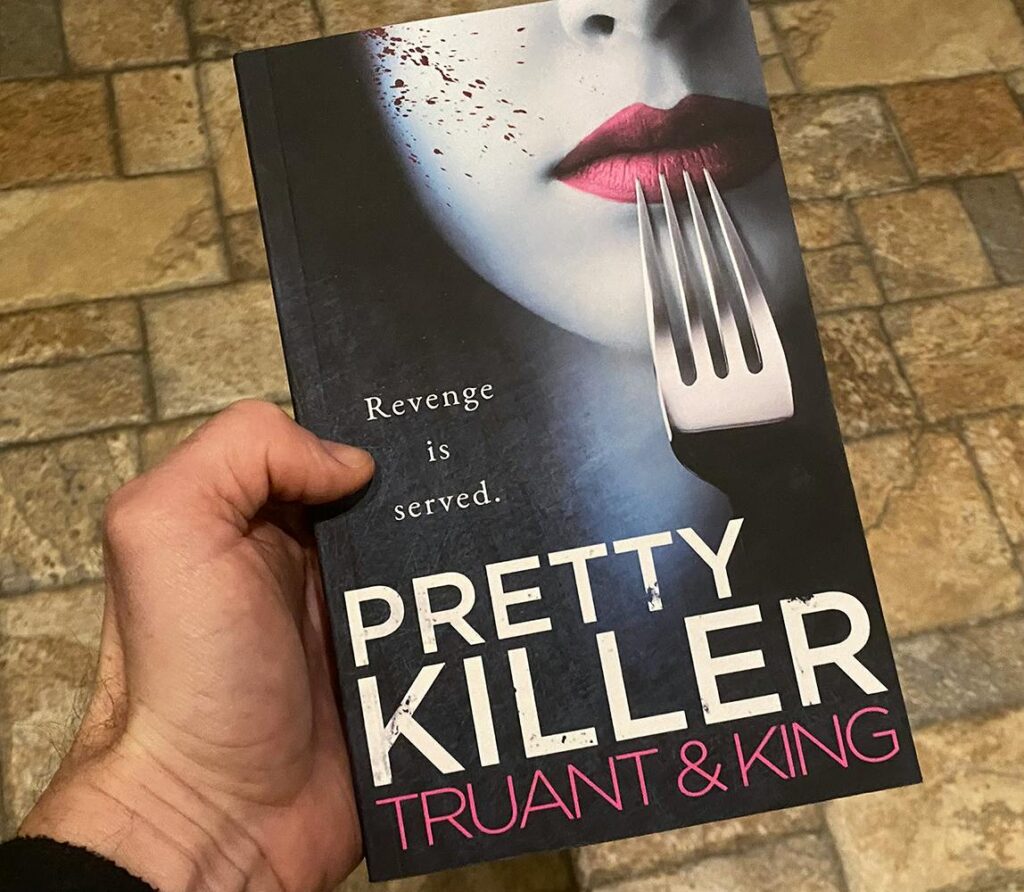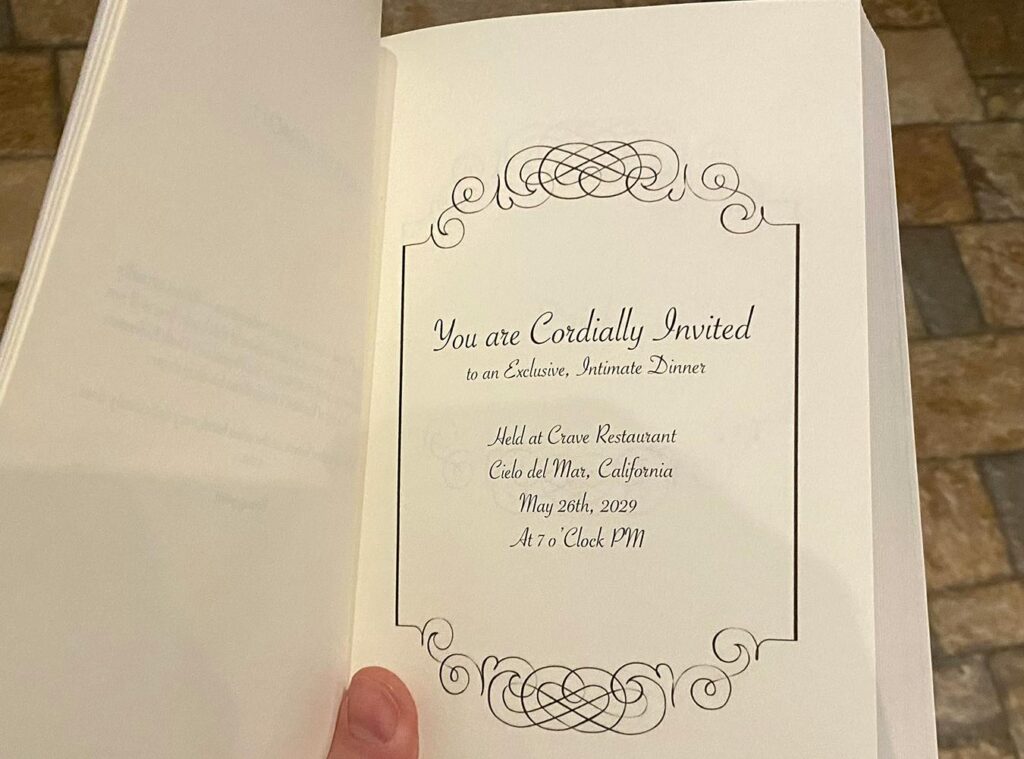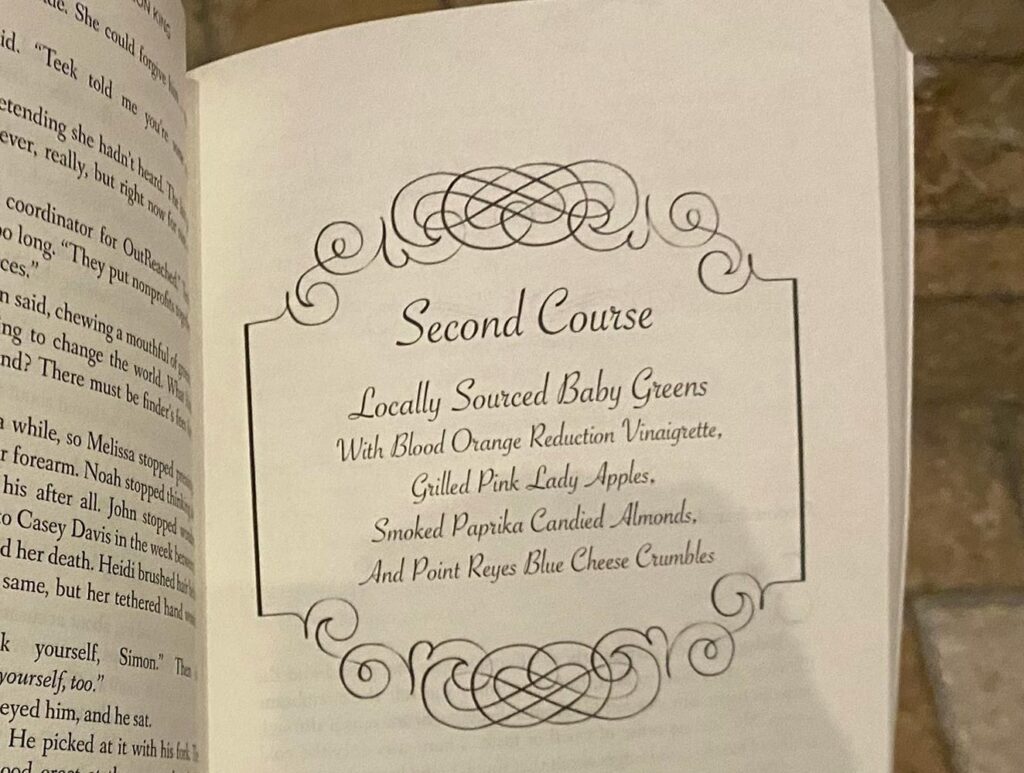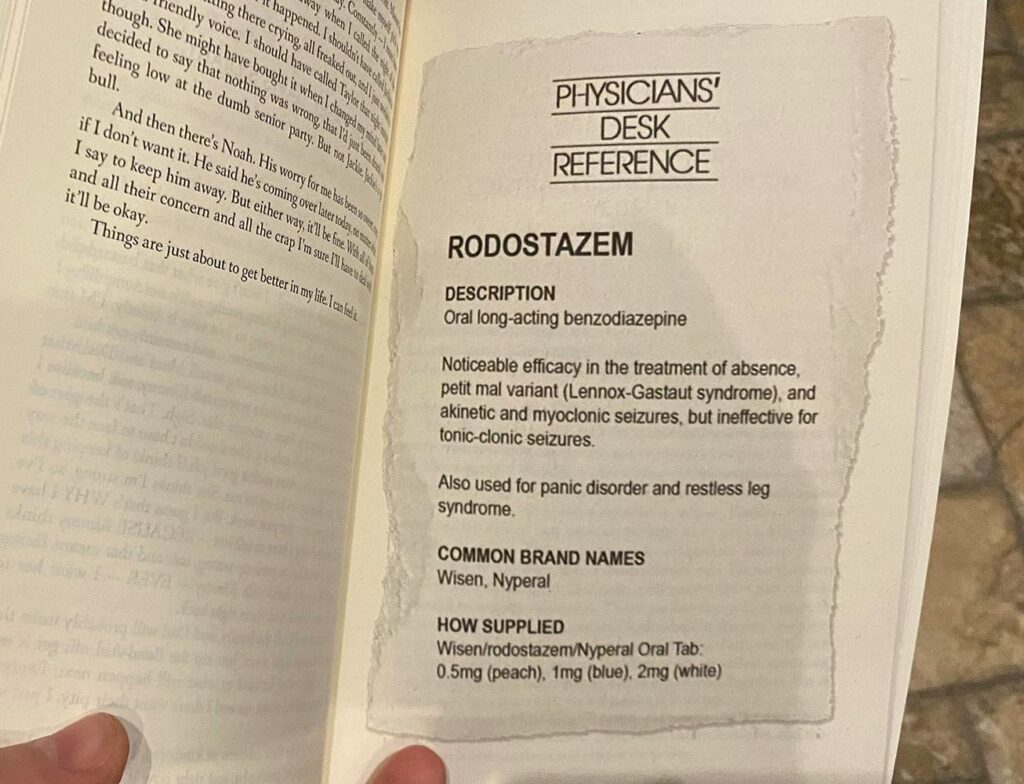Want to know more about how your favorite powerhouse of an author was formed? No? Okay, cool; here’s the story.
I always wanted to be an author. Not all authors can say that, but I can. I remember sitting on my grandparents’ porch in Bradenton, Florida, maybe eight years old, banging the keys of their ancient typewriter. The typewriter sat inside an openable shell with a handle, like a heavy little suitcase. I have no idea what I wrote on that porch (it’s been lost to the sands of time), but I know for sure that my first work contained an illustration of a bad guy exploding on a sci-fi fence after being shot with a sci-fi laser weapon. There was much sizzling and fire.
I got a bit more serious about my author career in college and began submitting short stories to literary magazines. That’s the way things worked back then: You wrote something, then mailed it to a magazine to try to get it published. You then got a rejection letter from some weirdo with a power complex and did it all over again. The goal was to crush the writer’s spirit as quickly as possible. I literally papered my wall with rejection letters.
When writing proved impractical, I instead got degrees in molecular genetics and philosophy. I also did this stupid shit to my hair:

Fortunately, it didn’t last long. My hair was back to normal by the time I asked Clinton’s secret service guys if we could get a picture together when Clinton spoke on the Oval at Ohio State University, which was good because they’d have arrested me if I still had the old hair.

After college, I started a PhD in genetics. Then I had some weird breakdown, quit everything, and thereby rendered all the money my parents spent on college useless and wasted.
Life happened. I was aimless and depressed, working as a barista at a Barnes & Noble cafe. My new wife supported us and began wondering why she’d been promised a PhD and ended up with a coffee jockey instead. I wrote sales copy, articles about Human Resources … any “writing work” I could find, since barista’ing didn’t pay too well.
After a series of events you won’t care about, I met my friend and eventual writing partner Sean Platt. We wrote approximately 100 bazillion words together (not an exact count) and published them as ebooks. The DIY publishing world was new then, so we grew along with it. We had a podcast. We wrote books for authors. We tried to figure our things out while the industry figured its things out.
There was a brief golden age. But then everyone started publishing, including a lot of people who either 1) didn’t care too much about storytelling but saw publishing as a get-rich-quick scheme or 2) did care about storytelling, but couldn’t stop to enjoy it because the only way to sell more books was to write more books. (This is where I remind you that I was one of the authors of Write. Publish. Repeat. and apologize for my part in flooding the market. There’s a whole lot of great, sincere, and talented writers out there … but let’s be real; there’s a lot of crap, too. )
There’s nothing wrong with writing and publishing a lot of books. I write fast, so Sean and I published plenty. At first it felt like a good thing, because we could tell more stories than the one-book-per-year trad publishing industry allowed. But then the whole hot mess turned into a slippery slope, and Kindle Unlimited turned a lot of reader paradigms from “buying a book” to “signing up for an all-you-can-eat-buffet,” and soon authors were telling us they couldn’t take vacations because they were like sharks now: If they stopped moving forward, they’d die.
I left the indie publishing spotlight. I wrote quietly for five years in a self-imposed cave, aware that my books were selling less and less but still trying to keep up by mass action: by just writing more, pushing forward, and trying to pretend it was all still fun for me.
Then, at the end of 2023, I emerged from my cave for the first time in years and attended a conference. What I saw there changed everything.
Yes, most writers at the conference were still trying to beat the clock and stay ahead of the reaper by writing as fast as possible (by then, AI-writing had upped the ante, turning fast into even faster) … but a splinter group of authors was doing the opposite. That odd crew was slowing down instead of speeding up, taking more time and care with each book, and even making their books beautiful. Some were even creating special edition paperbacks and hardbacks — the kind of thing people collect and cherish. Those books were works of art in and of themselves, above and beyond just reading material.
The new branch of artisan authors wasn’t trying to reach as many readers as possible (an approach that requires compromise, because mass-market writers must cater to mass-market wants, needs, and restrictions). Instead, they were starting to hyper-focus on getting just the right readers for their books instead of just any readers. They were, in other words, seeking quality readers over a quantity of readers.
To put it another way, while most authors were continuing to go wider in their reach (more books, more readers, more advertising to get the word out there), this group was going deeper.
More attention to each book. More attention to each reader. A focus on maximally serving their ideal people by being their own authentic selves as much as possible … instead of toning their style down so they could build a scalable, mass-producing publishing machine.
I spent the rest of 2023 reinventing myself … which really means that I finally allowed myself to write and publish in the way I’d wanted to all along, but been warned never to do.
Fuck the old way. Fuck thinking like an algorithm and churning out mass pulp driven by mass-action tactics. Instead I leaned in, and started calling myself an “Artisan Author.”
Where I used to think more, I now think better. Where I used to think wider, I now think deeper. Whereas I used to focus on quantity, I see now that the changes in the market — and in my own world — give authors like me permission to de-emphasize quantity and focus on much more on quality instead.
(Maybe this is where I should point out that I’ve written around 150 books, so my catalog is still big and I still work fast. Everything’s relative, people! Einstein taught us that.)
But you’re a reader, not an author. You probably don’t care what’s going on in publishing … just the books that come from it, and your experience in reading them. So what does all of this mean for you, the reader? How does my story about becoming an artisan author change the way I write, publish, and produce books for you to read?
Well, it’s pretty simple:
My books are normal books … but now I’m thinking of them as art projects, too.
Maybe you don’t care. That’s fine. If you want, you can just buy my books and read them like any other. But if you truly love books, I think you’ll dig what I’ve been up to. I’ve been putting extra flare into them – thinking about the experience of holding a book in your hand, if you get it in paper. That’s what I mean by “art projects.”
In my opinion, being truly immersed in a good book isn’t just about reading black and white words in order. That’s part of it, of course; without a good story, a book is just dressed-up pulp. But there’s more to it, in my mind … or at least there can be.
I began thinking this while reconditioning some books that were originally published by my friends at Sterling & Stone. While I was reformatting and republishing them on my own, I decided to spruce them up a bit while I was moving things around.
The first book I did was Pretty Killer. The process was so badass.
Most of my sales were and remain digital, but once I started thinking in artisan terms (which, by the way, began with the catchphrase “beautiful books”), I became hot to see what I could do with paperbacks. So that’s what I hit first, following my excitement in the way I always wanted to do.
This is Pretty Killer. I love this cover so much.

The thing to know about Pretty Killer (co-written with Sean Platt under the pen name “Nolon King”) is that it’s a dinner-party murder mystery. The adjectives that best describe the story are old Hollywood noir and feminine revenge. So, throughout, there’s this devious but extremely elegant interplay of terrible plots and refined snobbery. That’s basically my favorite thing to write.
Because it had an elegant, haute cuisine feel to it, Sean had the idea to write Pretty Killer in Courses instead of Acts. He even had a friend who’s a professional chef create a menu for our fictional meal.
From the beginning I thought: This is an elegant affair, so we need to present it elegantly. I thought it would be cool to create fancy images as section separators, and we could create an actual invitation to introduce the book. Problem was, that was a lot of work and it was out of my lane when the book was with S&S. Because it’d be a dick move to put a bunch of work on someone else’s desk and insist they do what I wanted, I let the idea go. We just used text as the separators, sub-optimal though it may have been.
Once I began revamping with “artisanship” in mind, though, I decided to change that. Here’s how the book begins now:

I also decided that Sean’s chef friend’s fine menu deserved better than just a list of foods in Helvetica on an otherwise blank page, so I made up course cards.
There’s one for every section (Drinks, Appetizers, First Course, Second Course, Dessert, Digestif), but I’ll show you the Second Course one because I actually understand these foods, unlike the fancy stuff in others:

This last one is cool. See, there are clues throughout this book, and I needed places to hide them … and also a way to reveal all those connections at the end without doing the whole “naked exposition” thing. You know the naked exposition thing, right? It’s when, at the end of a mystery, the detective simply tells everyone what happened and how it all worked. I’m not a huge fan, personally.
We decided that the best way to handle our own reveals was to create a bunch of “found documents” and give them to the reader instead: diaries, police reports, and various paperwork.
In the original version of Pretty Killer, we again could only present those as plain text files. In this new version, though, I decided that presenting the found documents as actual found documents would be much cooler.
This one won’t spoil anything. It’s the PDR entry for a drug we invented:

To finish it off, I created chapter flourishes, background images to match the look and feel of the other elements, and more. It was a full day of what we used to call “non-productivity” in the non-artisan days. I wasted so much time! Only … it wasn’t a waste if I was having fun expanding my creativity in ways my readers were going to enjoy and benefit from, right?
It’s so cool. Now, in addition to being just a book, every book is a tiny little art project. Most won’t need anything what I put into Pretty Killer so I’m sure the definition of “art project” will take on many different forms, but know that the attention is there. For one book, it might mean adding a bunch of bonus material. It might mean creating some sort of Easter egg hunt, or a beautiful special edition hardback with sprayed edges and gold foil stamping. It could be anything, as long as it’s creative and special.
Who knows? It’s all play now … and just like my readers, I plan to follow the story and see what happens.
